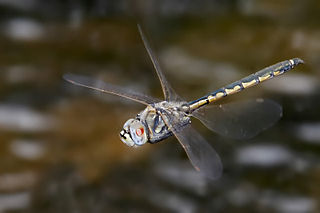 W
WA number of animals are capable of aerial locomotion, either by powered flight or by gliding. This trait has appeared by evolution many times, without any single ancestor. Flight has evolved at least four times, in the insects, pterosaurs, birds, and bats. Gliding has evolved on many more occasions. Usually the development is to aid canopy animals in getting from tree to tree, although there are other possibilities. Gliding, in particular, has evolved among rainforest animals, especially in the rainforests in Asia where the trees are tall and widely spaced. Several species of aquatic animals, and a few amphibians and reptiles have also evolved to acquire this gliding flight ability, typically as a means of evading predators.
 W
WAn alate refers to a winged reproductive caste from a social insect colony in its winged form. Their common behavioural function is starting a new colony, to expand their mother colonies etc. Colonies of termites and ants produce alates. It is a flight-based form of reproductive technique.
 W
WBats are mammals of the order Chiroptera. With their forelimbs adapted as wings, they are the only mammals capable of true and sustained flight. Bats are more manoeuvrable than birds, flying with their very long spread-out digits covered with a thin membrane or patagium. The smallest bat, and arguably the smallest extant mammal, is Kitti's hog-nosed bat, which is 29–34 millimetres in length, 150 mm (6 in) across the wings and 2–2.6 g in mass. The largest bats are the flying foxes and the giant golden-crowned flying fox, Acerodon jubatus, which can weigh 1.6 kg and have a wingspan of 1.7 m.
 W
WBats are the only mammal capable of true flight. Bats use flight for capturing prey, breeding, avoiding predators, and long-distance migration. Bat wing morphology is often highly specialized to the needs of the species.
 W
WThe order Chiroptera, comprising all bats, has evolved the unique mammalian adaptation of flight. Bat wings are modified tetrapod forelimbs. Because bats are mammals, the skeletal structures in their wings are morphologically homologous to the skeletal components found in other tetrapod forelimbs. Through adaptive evolution these structures in bats have undergone many morphological changes, such as webbed digits, elongation of the forelimb, and reduction in bone thickness. Recently, there have been comparative studies of mouse and bat forelimb development to understand the genetic basis of morphological evolution. Consequently, the bat wing is a valuable evo-devo model for studying the evolution of vertebrate limb diversity.
 W
WThis is a list of soaring birds, which are birds that can maintain flight without wing flapping, using rising air currents. Many gliding birds are able to "lock" their extended wings by means of a specialized tendon.Bird of preyBuzzards Condors Eagles Falcons Harriers Hawks Kites Osprey Secretary bird VulturesPasserineChoughs Raven WoodswallowsCranesSandhillHeronsStorksSea birdsAlbatrosses Frigatebirds Gulls Pelicans Petrels Shearwaters TernsExtinctArgentavis
 W
WFlapping counter-torque is a ubiquitous passive rotational damping effect in flapping flight that arises from world frame differences in the speed of flapping wings during turns. During a turns, flapping that is symmetrical in the body frame of the animal is not symmetrical in the lab frame.
 W
WHypuronector is a genus of extinct drepanosaur reptile from the Triassic Period that lived in what is now New Jersey. The etymology of the name translates as "deep-tailed swimmer from the lake", in reference to its assumed aquatic habits hypothesized by its discoverers. Hypuronector was related to the arboreal Megalancosaurus. It was a small animal, estimated to be only 12 cm (4.7 in) long in life. So far dozens of specimens of Hypuronector are known, but despite this, scientists have not found any complete skeletons. This makes attempts to reconstruct Hypuronector's body or lifestyle highly speculative and controversial.
 W
WInsects are the only group of invertebrates that have evolved wings and flight. Insects first flew in the Carboniferous, some 350 million years ago. Wings may have evolved from appendages on the sides of existing limbs, which already had nerves, joints, and muscles used for other purposes. These may initially have been used for sailing on water, or to slow the rate of descent when gliding.
 W
WMicroraptor is a genus of small, four-winged paravian dinosaurs. Numerous well-preserved fossil specimens have been recovered from Liaoning, China. They date from the early Cretaceous Jiufotang Formation, 120 million years ago. Three species have been named, though further study has suggested that all of them represent variation in a single species, which is properly called M. zhaoianus. Cryptovolans, initially described as another four-winged dinosaur, is usually considered to be a synonym of Microraptor.
 W
WNuptial flight is an important phase in the reproduction of most ant, termite, and some bee species. It is also observed in some fly species, such as Rhamphomyia longicauda.
 W
WInsect wings are adult outgrowths of the insect exoskeleton that enable insects to fly. They are found on the second and third thoracic segments, and the two pairs are often referred to as the forewings and hindwings, respectively, though a few insects lack hindwings, even rudiments. The wings are strengthened by a number of longitudinal veins, which often have cross-connections that form closed "cells" in the membrane. The patterns resulting from the fusion and cross-connection of the wing veins are often diagnostic for different evolutionary lineages and can be used for identification to the family or even genus level in many orders of insects.